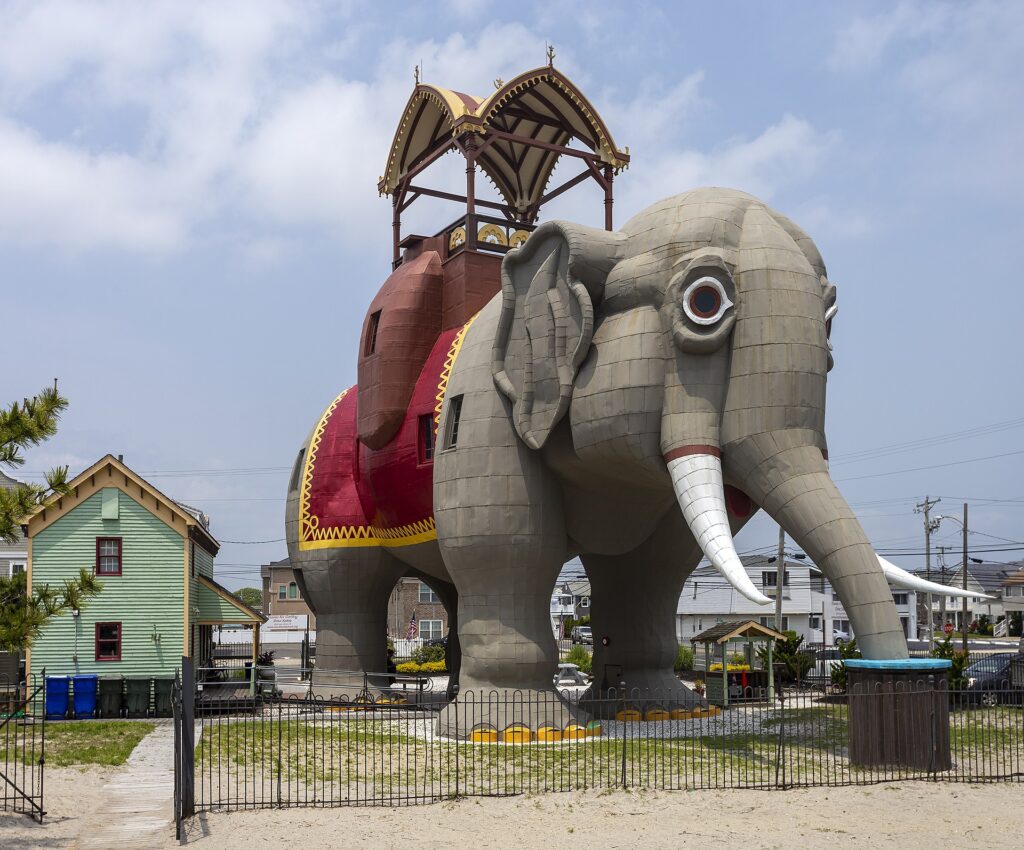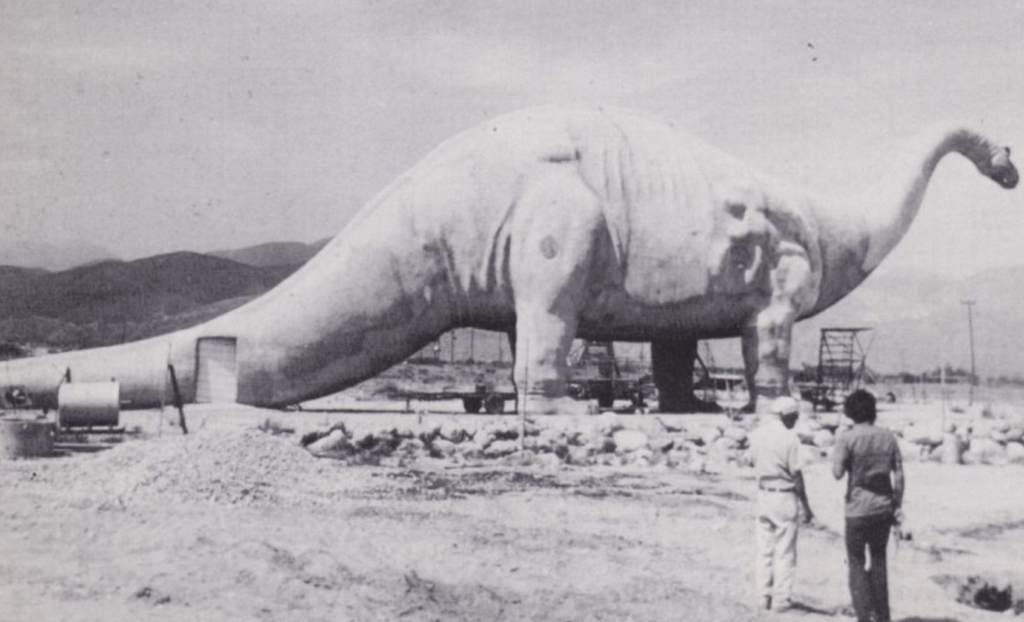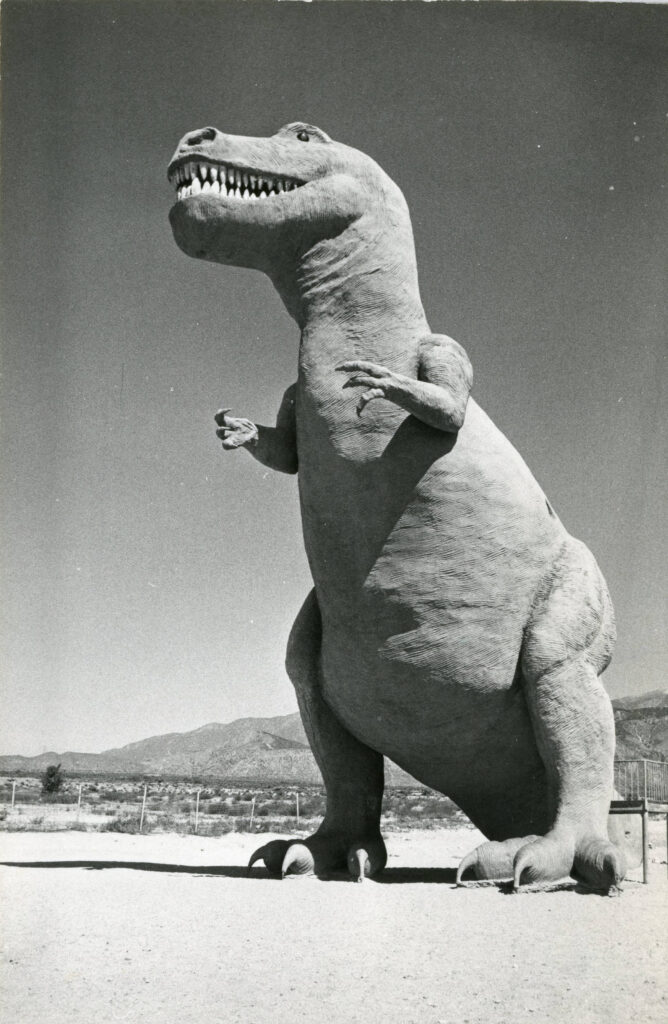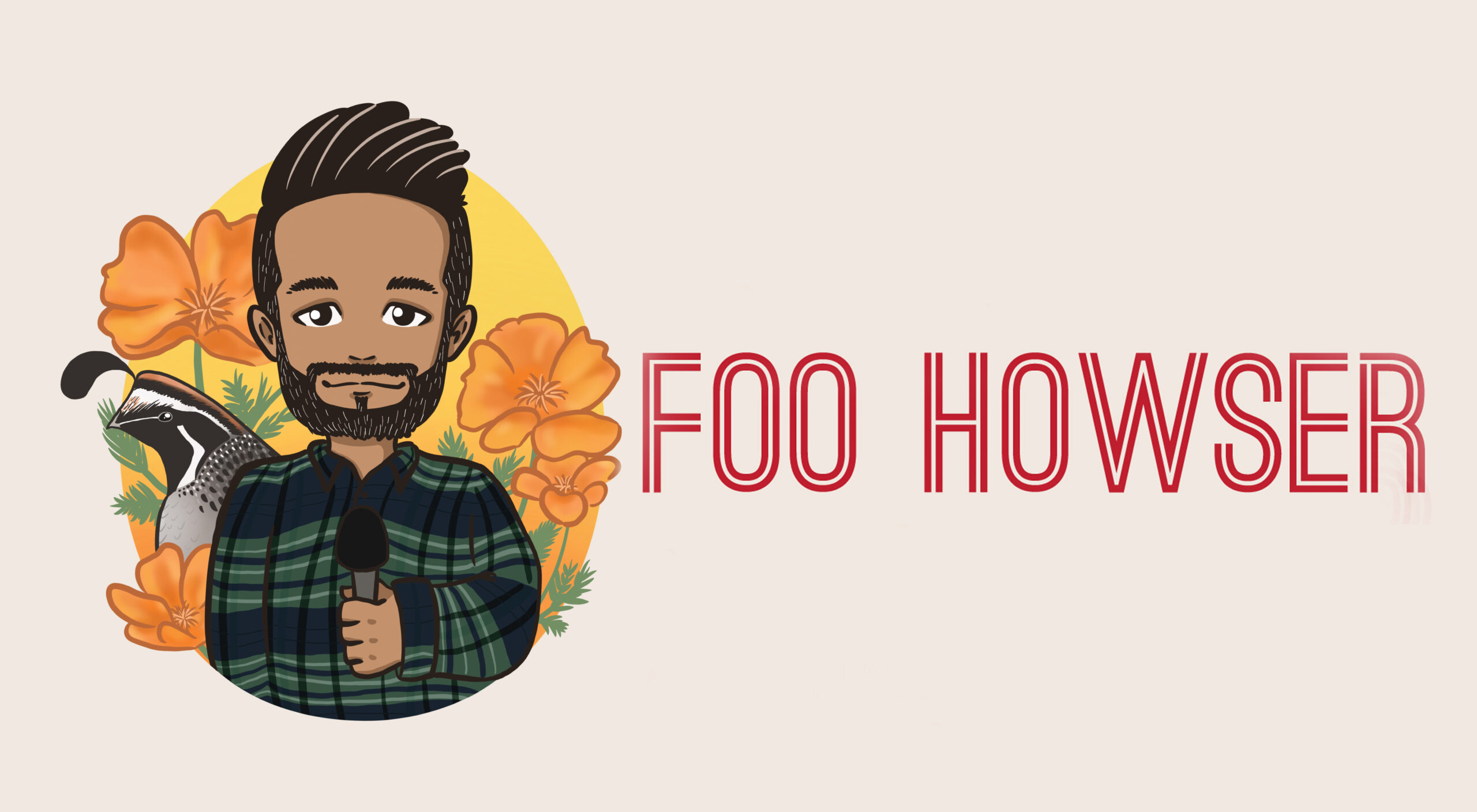If you’ve ever driven on interstate 10 through Cabazon in Riverside County, you’ve definitely seen the giant dinosaurs off the side of the freeway. But do you know who built them or how they ended up there? They are the result of one man’s lifelong dream to build a huge and lasting monument.
Claude Bell grew up in Atlantic City New Jersey and as a teen discovered he had a talent for sculpting. He would build sand sculptures of teddy bears in the sand and passersby would throw coins his way and his career as an artist was launched. It was also during his childhood in New Jersey that an uncle took him to see Lucy, a building in the shape of an elephant that would inspire his later masterpieces.

Bell worked in Atlantic City until he was 33, when he started to travel the country and working fairs, which is how he made his way to California in the late 1930s. While working at the Long Beach Pike in 1940, he met Walter Knott, of Knott’s Berry Farm, who hired him to built several of his park’s most famous statues—which include Handsome Brady and Whiskey Bill in Ghost Town, the Calico Belles, as well as many others; Bell also ran a portrait studio at the park.

Photo Credit: Orange County Archives
In the 1940s, he bought 62 acres in Cabazon and eventually opened the Wheel Inn Diner in 1958. Inspired by that childhood visit to Lucy, he decided to built a dinosaur to attract customers and started construction on Dinny the brontosaurus in 1964.
Dinny was created out of spare material salvaged from the construction of the nearby 10 freeway—it is steel frame work over which a metal grid was formed in the shape of the dinosaur, all of which was then covered by spray concrete. This took 11 years to build and cost $300,000. Dinny stands 45 foot high, 150 feet long, and weighed 150 tons. Bell housed a small museum and gift shop inside Dinney’s Belly which he charged a small fee to visit.

The 2nd Dinosaur, the T-Rex, originally named “Rex” and now known as “Mr. Rex” took considerably less time to build, but cost more (although Bell never disclosed the amount). It originally had a slide installed in its tail, but this was deemed unsafe and filled in with concrete. Although visitors could climb inside Rex and view the desert through his jagged teeth.

Bell had plans to build a 3rd statue of a Wholly mammoth as well as a prehistoric garden, but these were never completed due to bell passing away in1988.
After his death, the Wheel Inn and Dinosaur properties were sold to different buyers in the early 90s. The Wheel Inn continued to operate until 2013 and was demolished in 2016, with only the sign remaining.
The new owners of the Dinosaurs’ property used them as platform for creationism in the early 2000s. The gift shop and museum inside Dinny was filled with religious materials, as was the dinosaur exhibit that was added adjacent to Mr. Rex; which included scenes of knights fighting dinosaurs.

Photo Credit: noxiousburrito via Travel Advisor
The creationist elements were removed sometime in the late 2010s; and starting in 2020, the dinosaurs started getting paint jobs to match the Seasons. It’s free to take pictures with the Dinney and Mr. Rex, but the admission to the adjacent dinosaur exhibit includes many photo ops as well as the ability to climb inside Mr. Rex and look out over the ever changing desert.
When Claude Bell set out to build his dinosaurs, he wanted to build a monument that would withstand the sands of time, and he certainly achieved that. His dinosaurs have been immortalized and become pop culture icons thanks to their appearances in commercials, music videos and movies like “Pee-Wee’s Big Adventure” and “The Wizard.”
Even though the desert around them continues to change, they have remained a constant and iconic California roadside attraction.
References:
“Our Desert Past: The Cabazon Dinosaurs” by NBC Palm Springs YouTube Channel. June 25, 2020.
“History of the Cabazon Dinosaurs, Claude K. Bell, 1960’s” by Coachella Valley Staff, coachellavalley.com, Jan. 23, 2021.
“There’s a Dinosaur in my Chrysanthemus” first published in the Sept. 1975 issue of “Palm Springs Life” magazine, republished online by Rivian Taylor, Palm Springs Life, May 27, 2010.
“Cabazon: Why the Iconic Wheel Inn Closed” by Laurie Lucas, The Press-Enterprise, Oct. 3, 2013.
“Claude K. Bell; He Described Himself as a ‘Nut on Dinosaurs’” by Burt A. Folkart, The L.A. Times. Sept. 21, 1988.
“The Iconic Bench Sculptures That Adorn Knott’s Berry Farm” by Catherine Cervantes, Knott’s Berry Farm Blog, June 10, 2021.
“Dinosaur Garden Blooms in Desert: At 89, Claude Bell Has Even More Beasts Up His Sleeve” by Mike Eberts, The L.A. Times, Jan. 23, 1986.

